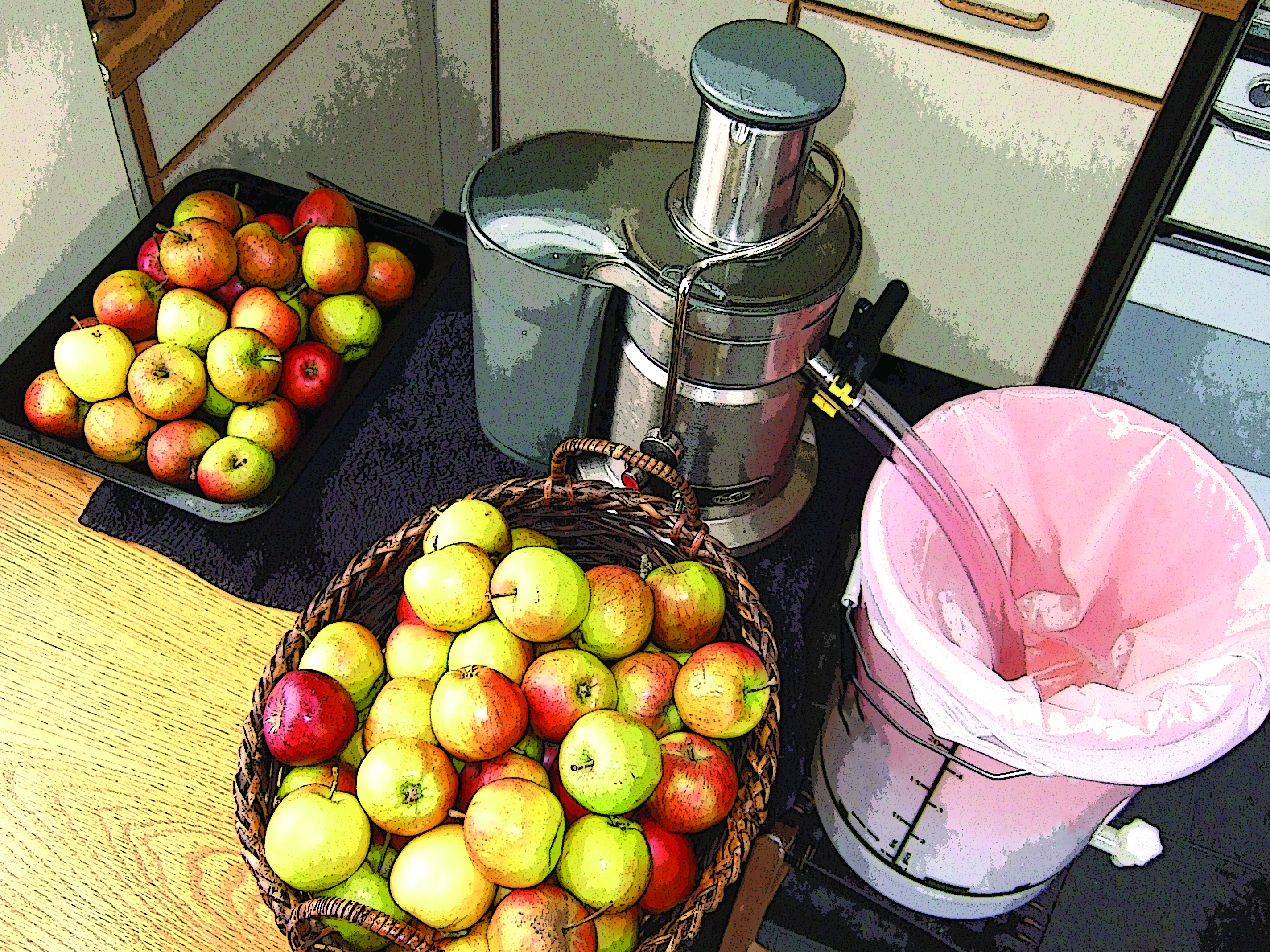Yes, our new neighbor got as drunk as a skunk. Blootered, bladdered, and blitzed as we Scots say, or in Cockney slang, Brahms and Liszt! He and his partner came along to a cider-themed evening at our house where he was initiated into the Scillonian Road hard cider making cooperative.
We started the evening with a hands-on practical session of how to use my “juice and strain” method to make clear apple juice and crystal-clear hard cider, quickly, and with minimal mess. Rather than smash the apples outdoors with a messy, old-fashioned cider press, I use modern centrifugal juicers right on the kitchen table.
Dinner was accompanied by last year’s homemade hard cider (6.5% alcohol by volume), apple wine (15% ABV), and store-bought Calvados (40% ABV). It was the latter that did him the most damage.
The next day, our new friend could remember nothing of the evening’s proceedings. He was unable to recall disclosing his lifetime’s accumulated prejudices, politics, religion, and relationships. Also my introduction to the juice and strain cider method had been lost, as with the spirit vapors.
To save further embarrassment, I said nothing about his verbal indiscretions, but I did re-explain my method to him as follows.
This project originally appeared in Make: Volume 36.




























